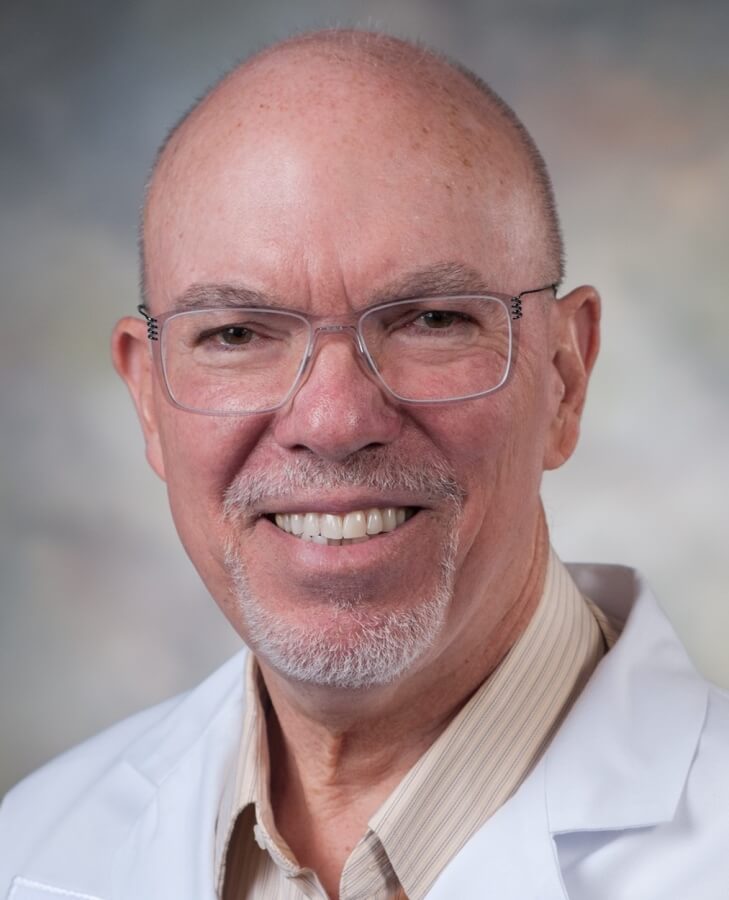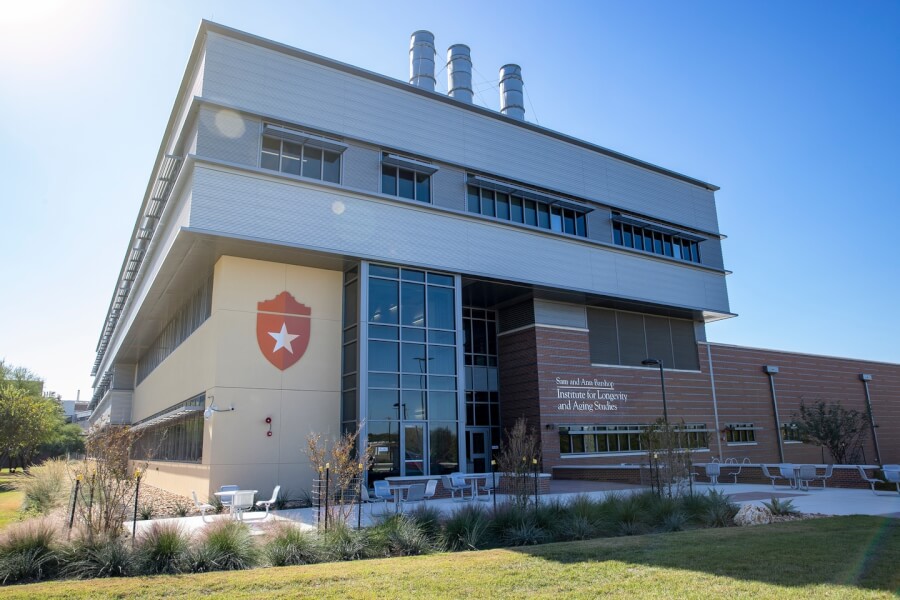The NIA Interventions Testing Program, including UT Health San Antonio, collaborated with peers in Tennessee and Switzerland.
Contact: Will Sansom, (210) 567-2579, sansom@uthscsa.edu
SAN ANTONIO (Oct. 12, 2022) — Researchers from the National Institute on Aging (NIA)-funded Interventions Testing Program recently reported the discovery of multiple candidate genes that influence longevity. The three Interventions Testing Program sites – The University of Texas Health Science Center at San Antonio, The University of Michigan at Ann Arbor and The Jackson Laboratory at Bar Harbor, Maine – collaborated on the study with the labs of Robert W. Williams, PhD, of the University of Tennessee Health Science Center at Memphis and Johan Auwerx, MD, PhD, of the École Polytechnique Fédérale de Lausanne in Lausanne, Switzerland.

“Some candidate genes impacted female life span while others affected the male life span,” said Randy Strong, PhD, of the Sam and Ann Barshop Institute for Longevity and Aging Studies at UT Health San Antonio. “One cluster of genes increased longevity of both sexes. In a rarity for these types of studies, the findings were made in a population of mice with genetic diversity comparable to human populations.”
The high-impact journal Science published the findings Sept. 30. Strong directs the Interventions Testing Program site at the Barshop Institute, which first attracted National Institute on Aging (NIA) grant funding for the Interventions Testing Program in 2003 and is in its 19th year of the NIA funding.

Genetic smorgasbord
“The study models what happens in people,” said research coauthor James Nelson, PhD, of the Barshop Institute. “Unlike mice in many other studies, mice in this newly reported research are not all the same. Each has different genetic variants, resulting in slightly different proteins that do slightly different things, which together can impact aging.”
Even subtle differences can lead to different health outcomes as we age. Slight variations in the hemoglobin gene, for example, can cause the hemoglobin protein in red blood cells to be less effective at binding to oxygen and transferring it from the lungs to the body’s tissues, Nelson noted. Anemia is one effect.
Female longevity
The discovery of genetic loci that influence longevity only in females is interesting and important, Strong said. Genetic loci are clusters of between 10 and 100 genes.
“Females and males differ in almost every aspect of aging you can explore,” Strong said. “They each must be studied, both to understand aging in the two sexes and to develop effective treatments. If we offer the same drug therapies to females that we offer to males, and females’ aging is caused by different genes, we are not going to be as effective in our treatments.”
Confirmation in roundworms
The next steps are scrutinizing these candidate genes to find ones that are responsible for increased longevity. In the final part of the Science article, the team reported doing this. The researchers tested candidate genes in roundworms, which are often used in aging research because of their short life span. “A number of the candidate genes did affect longevity in the worms,” Nelson said.
That doesn’t prove that those same genes in humans are going to affect human life span, the researchers said. But it’s another part of the case for continuing to study the genetic basis of longevity.
Powerful study design
As envisioned when the Interventions Testing Program began, having three sites where studies are conducted ensures statistical power and rigor and reproducibility of findings, Strong said.
The study is unique in that it is based on a large sample size of animals numbering several thousand, the authors said. “It is among the largest number of mice of any study that has attempted to identify genes that influence life span,” Nelson said.
 Barshop Institute excellence
Barshop Institute excellence
The Interventions Testing Program is one of several NIA-funded centers at the Sam and Ann Barshop Institute. Among them, the Nathan Shock Center of Excellence in the Basic Biology of Aging provides core services to enhance research of the fundamental biological questions of aging. The Claude D. Pepper Older Americans Independence Center, named for the late U.S. representative, is a center of excellence aimed at increasing scientific knowledge to develop better ways of maintaining or restoring independence in senior adults. The Barshop Institute is the only institute or university in the nation to have these three centers.
Strong is a tenured professor of pharmacology in the Joe R. and Teresa Lozano Long School of Medicine at UT Health San Antonio. Nelson is a tenured professor of cellular and integrative physiology in the Long School of Medicine.
Sex- and age-dependent genetics of longevity in a heterogeneous mouse population
Maroun Bou Sleiman, Suheeta Roy, Arwen W. Gao, Marie C. Sadler, Giacomo V. G. von Alvensleben, Hao Li, Saunak Sen, David E. Harrison, James F. Nelson, Randy Strong, Richard A. Miller, Zoltán Kutalik, Robert W. Williams, Johan Auwerx
First published: Sept. 30, 2022, Science
https://www.science.org/doi/pdf/10.1126/science.abo3191
The University of Texas Health Science Center at San Antonio (UT Health San Antonio), a primary driver for San Antonio’s $42.4 billion health care and biosciences sector, is the largest research university in South Texas with an annual research portfolio of $350 million. Driving substantial economic impact with its five professional schools, a diverse workforce of more than 7,000, an annual operating budget of more than $1 billion and a clinical practice that provides more than 2 million patient visits each year, UT Health San Antonio plans to add more than 1,500 higher-wage jobs over the next five years to serve San Antonio, Bexar County and South Texas. To learn about the many ways “We make lives better®,” visit https://uthscsa.edu.
Stay connected with The University of Texas Health Science Center at San Antonio on Facebook, Twitter, LinkedIn, Instagram and YouTube.
The Sam and Ann Barshop Institute for Longevity and Aging Studies is one of the world’s premier institutes dedicated to the study of age-related diseases. The Barshop Institute is the only aging-intensive research institute in the country to have four peer-reviewed designations: two National Institute on Aging (NIA)-funded centers (Nathan Shock and Claude D. Pepper centers), a testing site of the NIA-sponsored Interventions Testing Program, and a U.S. Department of Veterans Affairs Geriatric Research, Education and Clinical Center.


